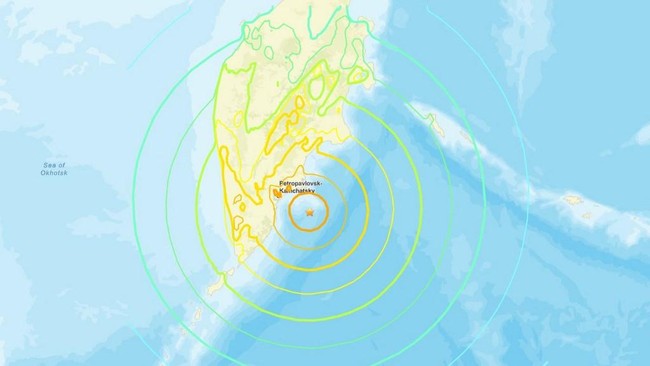
The Indonesian Meteorology, Climatology, and Geophysics Agency (BMKG) issued an early tsunami warning for northern Indonesia on Wednesday (Jul. 30) following an 8.7-magnitude earthquake in Kamchatka, Russia.
The agency identified at least seven potential aftershocks that could trigger tsunamis across regions, including Russia, Japan, Alaska, the Philippines, Hawaii, and Guam.
As a precaution, BMKG placed several Indonesian regions on alert, including Gorontalo City, North Halmahera, Manokwari, Raja Ampat, Biak Numfor, Supiori, Northern Sorong, Jayapura, and Sarmi. Waves under 0.5 meters were projected to reach these areas between 2:52 p.m. and 4:30 p.m. Central Indonesia Time (WITA) on Wednesday. Residents were advised to temporarily avoid coastal areas. As of now, no damage or significant impact has been reported.
UGM geological expert, Dr. Gayatri Indah Marliyani, responded to the BMKG’s tsunami warning. According to Dr. Marliyani, tsunami early warning systems are now well-coordinated across countries, national governments, and regional authorities.
“The early warning system is currently functioning well, with a consortium coordinating responses whenever there is a tsunami threat. Early alerts are already in place,” Dr. Marliyani stated on Friday (Aug. 1).
Countries along the Pacific Ring of Fire are part of an early warning system capable of detecting fault movements across the Pacific Ocean. Dr. Marliyani explained that if the earthquake’s epicenter is identified early, tsunami predictions can also be made promptly since water waves travel more slowly. In Indonesia’s case, the earthquake in Russia is unlikely to have a significant effect due to the considerable distance.
“The tsunami height has decreased significantly compared to when it first emerged in Russia or Japan,” she said.
Dr. Marliyani noted that BMKG’s tsunami warning and the alert status issued for several areas were appropriate. However, she emphasized the importance of public understanding. Early warnings are intended to reduce disaster risk by raising awareness, but they must be communicated clearly to prevent unnecessary panic.
On Wednesday evening (Jul. 30), BMKG lifted the tsunami alert after confirming the wave activity had ended. Fortunately, the resulting tsunami had a much smaller impact than initially feared.
The highest recorded wave reached 0.21 meters in Bitung, North Sulawesi, while other regions experienced waves between 0.2 and 0.15 meters, relatively minor compared to those in other countries.
The lifting of the tsunami alert marked the end of the emergency, but continued vigilance remains necessary.
“From my perspective, the early warning system and information dissemination were well executed. The public just needs to fully absorb the information so it doesn’t cause panic,” added Dr. Marliyani.
She advised the public to rely solely on official BMKG advisories, warnings, or bulletins as trustworthy sources of information. Meanwhile, viral content circulating on social media should be approached with caution.
Author: Tasya
Editor: Gusti Grehenson
Illustration: AFP

